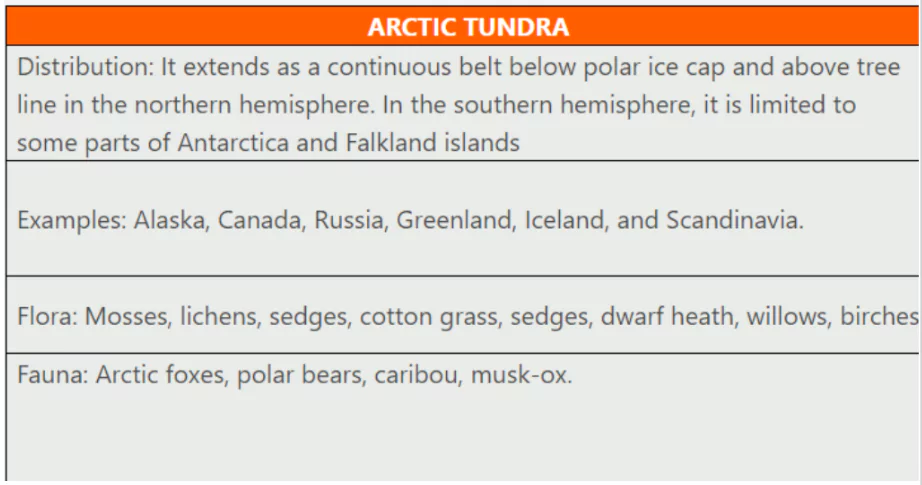Wildfires have been a natural part of the Arctic’s boreal forest or snow forest and tundra (treeless regions) ecosystems.
- As per Europe’s Copernicus Climate Change Service, it is the third time in the past five years that high intensity fires have erupted in the region.
Concerning Statistics On Arctic Wildfires

The Arctic has been warming roughly four times as fast as the world. While the global average temperature has increased by at least 1.1 degree Celsius above the pre-industrial levels, the Arctic has become on average around 3 degree warmer than it was in 1980.
- High Burning of Land: A majority of fires are in Sakha, Russia, where more than 160 wildfires burned nearly 460,000 hectares of land.
- High Carbon Emissions: The June monthly total carbon emissions from the wildfires are the third highest of the past two decades, at 6.8 megatonnes of carbon, behind June 2020 and 2019, which recorded 16.3 and 13.8 megatonnes of carbon respectively.
Enroll now for UPSC Online Classes
Factors for Worsening of Arctic Wildfires
As per the World Wild Fund, all three factors — rising temperatures, more frequent lightning and heat waves — will most likely worsen in the coming years, thereby causing more wildfires in the Arctic.
- Frequent Lightning: The fast paced warming has led to more frequent lightning in the Arctic, which has further increased the likelihood of wildfires.
- Example: Lightning-sparked fires have more than doubled in Alaska and the Northwest Territories since 1975.
- Rising Temperature: Soaring temperatures have also slowed down the polar jet stream — responsible for circulating air between the mid- and northern latitudes — due to less of a temperature difference between the Arctic and lower latitudes.
- Hence, the polar jet stream often gets “stuck” in one place, bringing unseasonably warm weather to the region.
- Heat Waves: It also blocks out low-pressure systems, which bring clouds and rainfall, possibly leading to intense heat waves, which can cause more wildfires.
Concerns with Rising Arctic Wildfires
By 2050, it is estimated that wildfires in the Arctic and around the world could increase by one-third.
- Emission of Greenhouse Gases (GHGs): When wildfires ignite, they burn vegetation and organic matter, releasing the heat trapping GHGs such as carbon dioxide (CO2) into the atmosphere.
- Hence, the rising frequency of wildfires around the globe is a matter of concern as they contribute to climate change.
- Storehouse of Greenhouse Gases (GHGs): In the case of Arctic wildfires, GHG emissions are not the biggest worry but rather the carbon stored underneath the region’s permafrost.
- Scientists estimate that Arctic permafrost holds around 1,700 billion metric tons of carbon, including methane and CO2. That’s roughly 51 times the amount of carbon the world released as fossil fuel emissions in 2019.
- Vulnerable to Thawing: Wildfires make permafrost more vulnerable to thawing as they destroy upper insulating layers of vegetation and soil. This can cause ancient organic materials such as dead animals and plants to decompose and release carbon into the atmosphere.
- In case of a large-scale thawing, it would be impossible to stop the release of carbon.
- This would mean that the world will not be able to limit global warming within the 1.5 degree Celsius threshold. Breaching the limit will result in catastrophic and irreversible consequences for the planet.
- No Actions Taken: To make matters worse, as of now, no one is keeping a tab on post-fire permafrost emissions, and they are not even fed into climate models. Therefore, there is no way to estimate their contribution to climate change.
- Arctic change amplifies risks globally and these fires are a warning cry for urgent action.
Check Out UPSC NCERT Textbooks From PW Store
![]() 5 Jul 2024
5 Jul 2024

